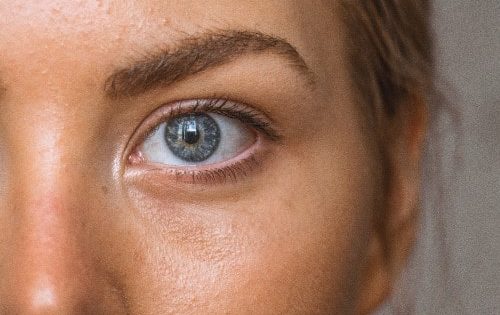If you’re considering undergoing skin rejuvenation such as dermabrasion, a chemical peel, or a laser treatment, you may wonder how these treatments differ and which one is your better option.
Since all of these techniques earn high satisfaction levels from patients, this article will break down the similarities and differences to help you make an informed decision on the procedure most suited to you.
How These Treatments are Alike
First, let’s look at how the three treatments are similar. In the right hands, all of these resurfacing techniques are safe and effective ways to treat common signs of aging and skin irregularities such as:
- Sun damaged skin/very early pre-cancerous lesions
- Wrinkles and fine lines
- Acne and acne scarring
- Freckles
- Hyperpigmentation
- Uneven skin tone and texture
- Birthmarks
- Age spots
These treatments also work to stimulate your body’s natural healing process to produce collagen, thereby revealing healthier-looking and tighter skin.
What is a Chemical Peel?
As the name suggests, a chemical peel relies upon one or more chemical substances applied topically to remove the outer layer of skin.
If you’re considering a chemical peel treatment, one thing to keep in mind is that you can choose between a mild, moderate, and deep chemical peel, depending on your skin texture, the extent of skin damage and aging, and the results you are hoping to achieve. Dr. Schmidt works with you to determine which level of treatment is best for you.
- A superficial chemical peel only removes the outermost layer of skin. As such, it’s best for patients who have more superficial wrinkles or sun damage. With a light peel, the chemical solution stays on your face only for a short time before being washed off. Patients who have mild peels can restore a healthy glow with minimal recovery time.
- Medium chemical peels are formulated to penetrate more deeply into the skin to address more severe wrinkles, sagging or other skin inconsistencies. This level of chemical peel may leave you with skin redness for several weeks after receiving treatment.
- Deep chemical peels are ideal for patients who have long-established wrinkles, significant unevenness of pigmentation, deeper scarring, and heavy sun damage. Because deep peels are the most aggressive level of chemical treatment, they also create the most profound transformation. This occurs by stimulation of new collagen production within the deeper portions of the skin. This process continues to take place for up to several months after the procedure. To maintain comfort during the procedure, deep peels often require a sedative and about two weeks of recovery time to allow for resolution of swelling and crusting. Pinkness may last for weeks to months but can be camouflaged much sooner with mineral makeup.
What is a Laser, and How is it Used in Skin Rejuvenation?
Instead of using chemicals to produce a controlled injury to the skin, laser skin rejuvenation uses light energy to yield a similar result.
Carbon dioxide lasers and Erbium Yttrium-Aluminum-Garnet (referred to as “Er:YAG”) lasers are some of the most common types used for skin rejuvenation. A CO2 laser creates a controlled injury on the skin’s surface using a concentrated beam of light. As the skin heals, a smoother complexion is revealed. This treatment is an excellent choice for bothersome facial lines, hyperpigmentation, acne scars, and texture irregularities. Recovery time is typically about 2 weeks, depending on the extent of treatment.
Fractionated CO2 laser treatment is also a population option, and it is less invasive than the traditional approach. This technique uses a fractionated laser beam to create columns of injury rather than treating the entire area. Recovery is usually much quicker with this option. The Er:YAG laser also treats the outermost layer of the skin, but it uses a milder technique and doesn’t penetrate as deeply as a CO2 laser. During treatment, the erbium laser beam gently vaporizes the skin cells without harming the surrounding tissue. Vibrant, healthy skin is revealed after the damaged skin has been removed. Patients who have moderate signs of aging and mild hyperpigmentation experience excellent results with this treatment. Recovery from Er: YAG laser treatment is usually around 10 days.
At Schmidt Facial Plastic Surgery, we commonly use the PicoSure laser, as it’s perfect for the active Coloradan and busy professionals who want zero downtime for recovery. This FDA-approved device is extremely effective at breaking up areas of unsightly pigmentation and does so by delivering thousands of rapid-fire energy pulses into the deeper layer of the skin.
Importantly, the PicoSure laser procedure is very gentle. Using state-of-the-art technology, each pulse fired lasts on the order of trillionths of a second. Such a short pulse duration produces very little heat, minimizing the likelihood of problems commonly associated with other laser types, such as burns, scars, and creation of other pigment abnormalities. Unlike most other lasers that typically leave the face oozy and crusted, the PicoSure works without disrupting the outer skin layer.
Patients who choose laser skin rejuvenation with PicoSure can expect a rapid recovery time with minimal negative side effects. One should expect mild redness and slight swelling, neither of which last longer than a day following the procedure. Overall, the PicoSure laser is a quick and safe way to attain a healthier and younger-looking appearance!
In a later post, we’ll talk at length about how PicoSure technology revolutionized treatment of and dominates the market in terms of tattoo removal.
Dermabrasion
Dermabrasion is a versatile treatment that uses physical exfoliation to improve skin texture and reduce moderate signs of age. Scars can also be effectively blended with this procedure. A special instrument with a rapidly rotating tip is passed over the skin. This gently removes the uppermost layer of the skin, allowing smooth, healthy skin to eventually replace it.
The entire dermabrasion treatment can typically be performed in about 90 minutes or less. It’s a popular treatment for patients who want to drastically improve the appearance and quality of their skin. Most of the recovery for this procedure typically occurs over 10-14 days, with healthy skin starting to grow in after only 7-10 days following treatment.
Taking Care of Your Skin After Your Treatment
Another similarity between chemical peels, laser treatments, and dermabrasion is the need to be careful with sun exposure after treatment. Patients should apply moisturizer with SPF to preserve their results as long as possible. While the aging process marches onward, your skin should always look younger following a procedure relative to not having had one. However, falling into unhealthy skin care habits can certainly bring back some of the imperfections that caused you to seek treatment in the first place.
Which Option is Best? How to Decide
Deciding between the various options discussed above may still be a little confusing. Admittedly, there may be too many variables for you to make a decision without an expert assessment and recommendation. By contacting our Denver-area clinic, you can schedule a consultation to meet with Dr. Schmidt who will help guide you toward the best treatment regimen for your skin.




